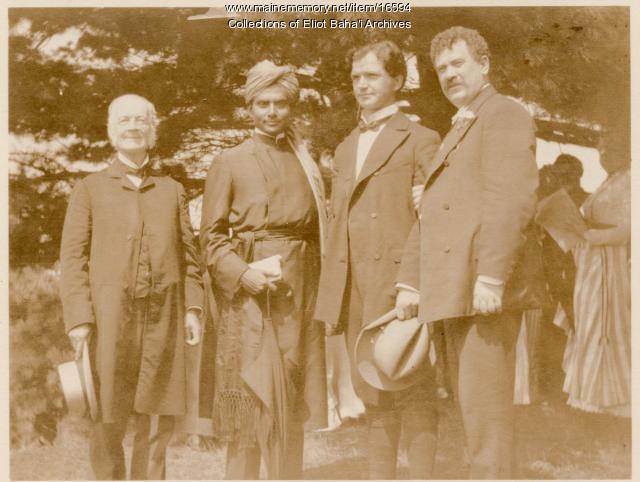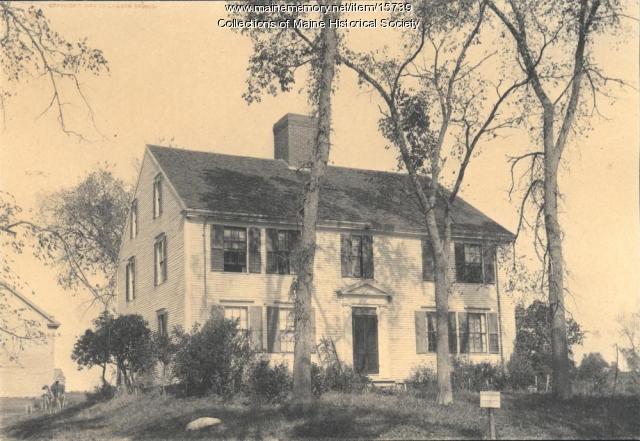Keywords: acre
Item 6465
Green Acre Fellowship membership card, 1925
Contributed by: Eliot Baha'i Archives Date: 1925-05-29 Location: Eliot Media: Ink on paper
Item 16594
Visitors to Green Acre, Eliot, ca. 1900
Contributed by: Eliot Baha'i Archives Date: circa 1900 Location: Eliot Media: Photographic print
Item 99096
17 Frost Street, Portland, 1924
Owner in 1924: Anna C. Barrett Use: Barn
Item 116309
A house for an acre lot, ca. 1900
Contributed by: Maine Historical Society Date: circa 1900 Client: unknown Architect: John Calvin Stevens
Item 116466
Gorham Academy alterations, Gorham, 1909
Contributed by: Maine Historical Society Date: 1909 Location: Gorham Client: Gorham Academy Architect: John Calvin Stevens and John Howard Stevens Architects
Exhibit
The Advent of Green Acre, A Baha'i Center of Learning
The Green Acre Baha'i School began as Green Acre Conferences, established by Sarah Jane Farmer in Eliot. She later became part of the Baha'i Faith and hosted speakers and programs that promoted peace. In 1912, the leader of the Baha'i Faith, 'Abdu'l-Baha, visited Green Acre, where hundreds saw him speak.
Exhibit
Maine has some 17 million acres of forest land. But even on a smaller, more local scale, trees have been an important part of the landscape. In many communities, tree-lined commercial and residential streets are a dominant feature of photographs of the communities.
Site Page
View collections, facts, and contact information for this Contributing Partner.
Site Page
Maine's Swedish Colony, July 23, 1870 - Agricultural Statistics of the Colony, 1870 to 1880
"… barley, oats, corn, beans, and potatoes - 166 acres planted apples - 19 trees 1873 grass - 400 acres horses - 22 oxen - 14 cows/calves - 100/40…"
Story
My career as a wildlife biologist
by Ron Joseph
Rural Maine provided the foundation of a rewarding career as a wildlife biologist.
Story
Pandemic ruminations and the death of Rose Cleveland
by Tilly Laskey
Correlations between the 1918 and 2020 Pandemics
Lesson Plan
Longfellow Studies: The Elms - Stephen Longfellow's Gorham Farm
Grade Level: 6-8, 9-12
Content Area: English Language Arts, Social Studies
On April 3, 1761 Stephen Longfellow II signed the deed for the first 100 acre purchase of land that he would own in Gorham, Maine. His son Stephen III (Judge Longfellow) would build a home on that property which still stands to this day. Judge Longfellow would become one of the most prominent citizens in Gorhams history and one of the earliest influences on his grandson Henry Wadsworth Longfellow's work as a poet.
This exhibit examines why the Longfellows arrived in Gorham, Judge Longfellow's role in the history of the town, Henry Wadsworth Longfellow's vacations in the country which may have influenced his greatest work, and the remains of the Longfellow estate still standing in Gorham today.
















